Declining Interest in Community Pharmacy Practice Reflects Career, Industry Uncertainty
Interest in community pharmacy practice is declining as pharmacists seek roles with better work-life balance, greater autonomy, and more meaningful patient care opportunities.
Pharmacists are considered medication experts, and historically, their role in health care revolved around dispensing medication. Oftentimes, pharmacists had little interaction with patients or other health care providers. However, their role has shifted, and they are now essential health care team members who focus on championing affordable care, healthier communities, and better clinical outcomes.1
Although these changes are inherently good for pharmacists and their patients, there is a substantial decline of interest in the community pharmacy profession.
“It's been the percentage [of pharmacists] that go to chain pharmacies that has declined, and that's partly due to their experiences as a pharmacy student, where perhaps they did an IPPE [introductory pharmacy practice experience] in a chain environment and saw situations where the pharmacists were feeling overworked,” David Nau, PhD, BSPH, professor of social and administrative pharmacy at Ohio State, said in an interview. “There's this perception that pay hasn't kept pace with the cost-of-living increases; the work environment is tougher because there may be fewer technicians to support; and that's part of the real realities of that current business model of pharmacy being heavily dependent on dispensing revenues.”
The Declining Interest in Community Pharmacy
Employment of pharmacists from 2018 to 2022 grew by 25.5%, and the average pharmacist made $122,838 in 2022, according to a study published in the Journal of the American Pharmacists Association.1 However, when looking at subsections of pharmacists, community pharmacy employment declined from 60% in 2014 to 54% in 2022. By 2033, it is expected to decline to 49.4%. The declines are thought to be driven by automation, online competition, and major retail closures, such as CVS, Walgreens, and Rite Aid.
“We see a lot of store closures for a lot of reasons,” M.O. Faruk Khan, BPharm, MPharm, PhD, MBA, professor and assistant dean of student success at Ferris State University College of Pharmacy and an author on the study, said in an interview. “[CVS and other chains] are struggling to get pharmacists now because the work environment has created burnt out, stressful jobs, with too much expectation and too much workload without compensation. Salaries are also kind of stagnant.”
Nau added that with the closure of large chain stores, the remaining pharmacies in the area have to pick up their workload.
“In the chain pharmacies, I think what they complain about is that there is no autonomy,” Khan said. “They have no say. They feel neglected a lot of time, and salaries are always there as an issue.”
The decline in pharmacists can be attributed to work environment, wages, and pharmacist burnout, among other factors. The authors stated that work conditions were the primary reason for job changes in 2022, with workers shifting to sectors such as home health and infusion, nursing homes, and long-term care. Large chains are experiencing the most burnout, but small chains and independent community pharmacies have the highest autonomy and satisfaction with the lowest burnout rates.1
“I think the current generation of pharmacy students that are graduating are less likely to be lured in by the money,” Nau said. “They're more interested in work-life balance. They're more interested in having a fulfilling career where they're serving people, and they may perceive they're less able to do that in the chain environment.”
Lisa Garza, PharmD, clinical assistant professor in the department of pharmacy at the University of Washington, shares the sentiment. She said students want to see more work-life balance, so it would be valuable to try to figure out how to bring that into community pharmacy more. Garza added that including more time away from the counter could help students explore delivery of care in community pharmacy.
“Some of [the students] come in having worked in a community pharmacy and that experience may have empowered them, and they really learned a lot from the pharmacist they worked with,” Garza said. “They saw great relationships and that's why they want to get into it. Some though, they maybe didn't have that experience before, but in school or potentially they get a job, or they just see that pharmacist behind the counter that doesn't really seem to be having that so their perception is, ‘Oh, that's what community pharmacy is. It looks stressful. It doesn't look rewarding.’”
Nau said that sometimes a pharmacist can be overworked, and their perception of pharmacy is a bit more negative. He said this can affect the outlook for potential students who might not want to consider the path of community pharmacy afterwards.
Burnout as a Contributor to Lack of Interest in Community Practice
As the workload continues to expand, burnout has become a bigger part of the conversation, Garza said. She said some places do not have enough resources or staff to fulfill their job requirements without the extended scope of practice, but sometimes it is not about cutting back. Sometimes burnout could come from not feeling like there is an impact.
“I think we do need to, in some cases, pull back. Some people are just, frankly, being asked to do too much. But I don't think the answer is always, ‘Let's do less,’” Garza said. “It [is giving] people space to solve problems and do more to listen to them, because that can be really empowering. It's really disempowering when you constantly are just in the same spot and you can't make progress.”
Nau said pharmacy students are interested in helping patients and the independent environment might make them feel like they are able to spend more time with patients and help them with their health needs.
“They may be in a small community where [they’re] the only health care provider around the community [that] relies on them for being that point of contact with health care, and so they like that environment,” Nau said. “I think the independent model is more aligned with the current mindset of pharmacy graduates of today.”
Nau said the fundamental business model for pharmacy is the underlying problem today and will continue to be until pharmacists get properly reimbursed for clinical services. Vaccines are one of the few places where pharmacies can make a margin and serve the public in ways that go beyond medication dispensing. Nau said pharmacy needs more of these services.
“Fundamentally changed business models can create opportunities for pharmacists to do clinical services to generate revenue,” Nau said. “We're not going to see any significant change now. I know the major players in community pharmacy have been trying to do things like work with colleges of pharmacy to help the next generation of pharmacists understand that there's still a lot of good things you do for people.”
Where is the Pharmacy Profession Heading?
Nau said that until the fundamental business practice is addressed, pharmacists will probably continue to struggle to some extent. However, he is cautiously optimistic about the future. AI could help take away some of the administrative tasks that pharmacists and pharmacy technicians do, which could free them up for other services that are more clinical and patient focused.
“There’s fear that we're going to just see pharmacists disappear [and] be replaced by AI,” Nau said. “I don't think that has to be the case. I think if we're smart about this, we can get the AI to pick up the administrative tasks and help improve efficiency, but we've got to create those revenue-generating opportunities for pharmacists that are beyond dispensing.”
Khan said that pharmacists need to be recognized as providers. He said that advocacy is still needed to achieve provider status, and technology can help achieve this. Digital and remote health can help pharmacists and other health care providers collaborate easier, and pharmacists and physicians bring 2 very different expertise into care.
“That is the recognition pharmacists need to have,” Khan said. “We cannot do that unless and until they get the provider status. That way they can get more reimbursement for their expertise [and] for their counseling services.”
While Khan and Nau are cautiously optimistic about the future, Garza is more so. She said there are areas where she is optimistic and pessimistic, but overall, she’s hopeful. She said there was a point when Amazon Pharmacy and mail-order pharmacies were first established that there was a fear community pharmacies were going to fade away. But they did not.
“I am optimistic that [pharmacists] are going to be able to do really great things, be really impactful in their communities, and our students are going to be a part of that story,” she said. “I think there will always be a place for community pharmacy. It's just going be an evolving, different thing.”
Ready to impress your pharmacy colleagues with the latest drug information, industry trends, and patient care tips? Sign up today for our
REFERENCE
Khan MOF, Sawesi S, Rashrash M, Goddard BA. Employment and Wage Trends Among Pharmacists and Other Healthcare Professionals: 2014-2022. J Am Pharm Assoc (2003). Published online May 31, 2025. doi:10.1016/j.japh.2025.102428
Newsletter
Pharmacy practice is always changing. Stay ahead of the curve with the Drug Topics newsletter and get the latest drug information, industry trends, and patient care tips.




































































































































